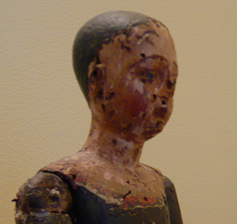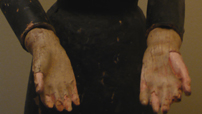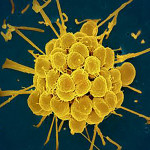
Her face has been eaten from within by word boring insects. The thin layer of paint that defines her features is chipped and crazed. Her hands and elbows, which once articulated freely, are now frozen in place and she does not like to be moved.
I found her at a flea market in Massachusetts, many years ago. I?m sure that her creator, a Spanish or Indian artisan in Mexico sometime in the long-forgotten past, could never have foreseen that one day she would be standing on a pedestal in someone?s living room in Manhattan, twenty-four hundred miles away.
Despite the toll that time and nature have taken on her, she remains dignified. I think of her now as an icon for HIV - my own personal ?Our Lady of Aids?.
The last time I changed the position of her hands was in 2001. I had lost my cousin Gale to breast cancer ten days before 9/11, and my other cousin, Gale’s sister, Jill, to a brain tumor six weeks later.
We all become more reflective at this time of the year. It?s the time of the year when we think about where we came from, where we are going and what we want our lives to mean. Sometimes it makes us sad, but more often than not, it leaves us with a warm glow that guides us through the winter months that follow. I miss my cousins, but their memories are with me wherever I go.
When I look at the statuette I smile. Despite all that she has seen, all of the people I have loved and lost over the years, I believe that the expression on her face is one of hope, and that her hands, forever open to the sky, are telling me that all my absent friends and family are at peace, wherever they are.
I hope that all of you have are having as happy and healthy holiday as I am, and that we will all have many more happy and healthy hoIidays in the years to come.








Comments
Comments